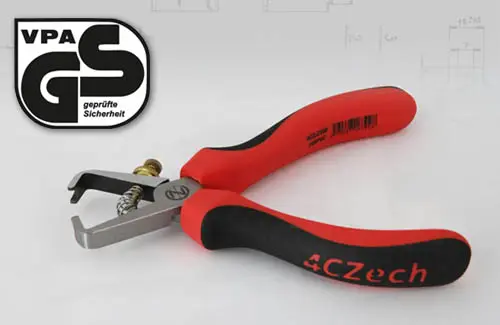The regular price is the current manufacturer's recommended price! FREE shipping for orders over EUR 41,67 within CZ+SK (PPLparcel)

The principle is that the jaws cut through the insulation and pull it off the conductor in a counter-directional movement. This makes the work easier and you are sure that the cable / conductor will not be damaged.
There are several variants of wire strippers, depending on the price and quality of the work performed. Therefore, you must take several aspects into account when choosing.
There are classic models, automatic wire strippers, or, for example, multifunctional ones, which, in addition to stripping, offer, for example, pressing ferrules or crimping.
Classic models have a screw with which you can adjust the clamping of the jaws to the desired wire diameter. Then you just need to clamp and pull the insulation off the conductor. It is not uncommon for classic pliers to already be equipped with jaws for a specific wire diameter.
What should you pay attention to when choosing pliers?
For example, setting the length or depth of cut. If you use automatic stripping pliers, there is no need to adjust the settings, as they adapt to most cables themselves.
Also, take into account the minimum and maximum diameter and cross-section of the cable. The minimum can be 0.05mm in some cases and the maximum is 6mm. Cross-sections vary from 0.01mm to 0.75 mm2 and the maximum from approximately 2.5 to 26 mm2.
ALWAYS use a stripping knife for flat cables. This is one of the alternatives to pliers.
We have selected more articles for you: